Log homes as we know them today are an American icon but they did not originate here. Native Americans built log lodges long before European immigrants arrived but they did not catch on. The first log homes were patterned after those made in Finland and Sweden.
Our founding fathers lived in conventional English-style homes instead of log homes. They thought log homes were for the very poorest people and avoided them. Little did they know how popular they would become. Today, most people admire them for their beauty and atmosphere.
To better understand why the colonists started building log homes, we need to see how immigration started it all. Conventional homes cost too much for the pioneers which spurred them on to use local and free resources. Early styles were simple layouts but required much manual labor to construct.
Early Immigrants Started Building Log Homes
The ship Mayflower arrived in the colonies in 1620 and started a rush of immigrants that has lasted 400 years. That first group from England consisted of 102 men, women, and children. By 1638, some Finnish and Swedish families arrived and built log homes of their own styles.
As the population of the colonies grew, many people moved further west into the interior. Their homes were simple and needed to be erected quickly. Families lived in tents, lean-tos, and even caves while the houses were built. They built other structures from logs, including:
- Inns and taverns
- General stores
- Barns and livestock sheds
- Woodsheds and fences
As government officials increased free land grant allotments, more people moved to take advantage of them. They all needed housing, and log homes were their favorite choices.
Conventional Homes Cost Too Much
 The wealthy and middle-class colonists constructed their homes similar to those in the British Isles. Trees had to be fashioned into traditional building materials that were expensive, like:
The wealthy and middle-class colonists constructed their homes similar to those in the British Isles. Trees had to be fashioned into traditional building materials that were expensive, like:
- Framing
- Flooring
- Roofing
- Doors
- Windows
- Furniture
Indentured servants typically lived in housing provided free by their masters. The poorer people rented houses or lived with relatives. Neither group could afford the building materials or labor charged by the builders. When they got the opportunity to own their own houses, they generally built with logs and walked on dirt floors.
Log homes as we know them today are an American icon but they did not originate here. The first log homes were patterned after those made in Finland and Sweden.
Pioneers Used Local Resources for Log Homes
Trees suitable for building homes were plentiful in virtually every eastern state in America in the 1600s, 1700s, and early 1800s. The Civil War, the coming of the railroads, and the industrial revolution required hundreds of thousands of trees to meet their needs.
In the meantime, pioneers and settlers that moved west toward the Appalachian Mountains and Great Lakes used the resources available to them. The trees were virtually free that came with the land they obtained with grants or purchased. They felled the trees, hewed them to shape, and stacked them for walls.
These folks even made their shingles out of flat pieces of wood like oak, poplar, chestnut, maple, pine, ash, or cedar. The rest of the structure came from the same trees. They chinked between the logs with mud, straw, horsehair, moss, wood chunks, or whatever they could find.
Early Styles of Log Homes
 Both single and two-story log homes were fashionable in the early days of America. There were four popular styles to meet family needs depending on the family’s size that included:
Both single and two-story log homes were fashionable in the early days of America. There were four popular styles to meet family needs depending on the family’s size that included:
- Single Pen homes were one-room structures with a chimney on only one end.
- Double Pen houses consisted of two rooms with a chimney on each end.
- Saddlebag log homes were two large rooms and a single central chimney to serve both.
- Dog Trot cabins and houses were double pens separated from each other but connected with a covered breezeway.
These log homes were generally made with square-hewn logs but other variations were used such as round logs and rough-hewn logs. Spring and summer were the best times to begin construction so they could plant crops and move in before winter.
Building a Log Home Today
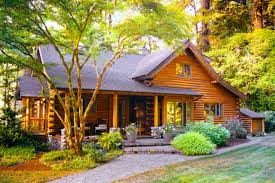 Building a log home today is much easier when you use pine or cedar log siding. Contractors install the wood siding on conventional framing with screws or nails. The best style to choose is tongue and groove with the end-matching design. It fits together snugly, the screw or nail heads don’t show, and it’s virtually a ‘no waste’ material.
Building a log home today is much easier when you use pine or cedar log siding. Contractors install the wood siding on conventional framing with screws or nails. The best style to choose is tongue and groove with the end-matching design. It fits together snugly, the screw or nail heads don’t show, and it’s virtually a ‘no waste’ material.
We offer pine and cedar log siding in four profiles that can be purchased in an unfinished or pre-finished condition. Shop our website for corner logs, trims, flooring, beams, posts, stairways, and more. Our log siding specialists are happy to answer all your questions.
Resources and References:
Building Log Homes


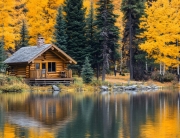
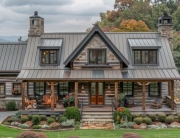
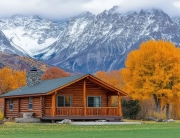
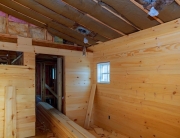
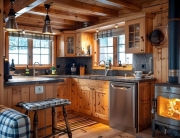
Recent Comments